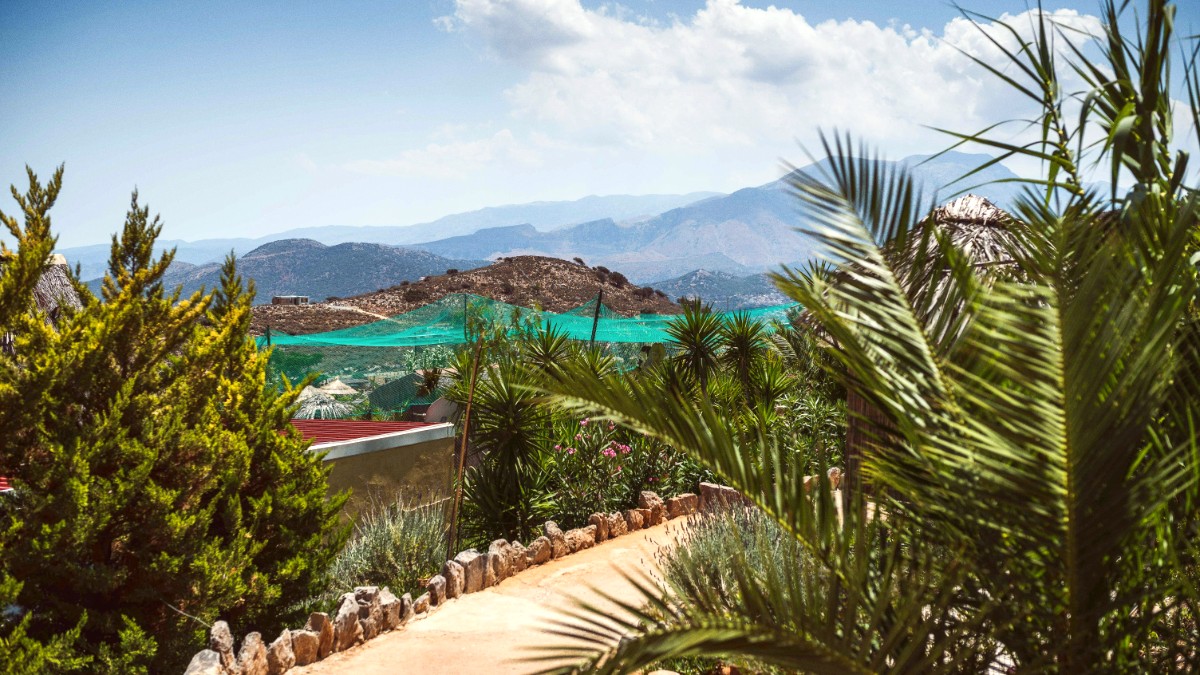
Greece
Cretan gastronomy reflects a way of life, focusing on fresh, local ingredients and a slower eating pace. It forms a core part of the globally recognized Mediterranean diet. Historical influences from Minoans, Venetians, and Ottomans shaped its traditions.
Despite diverse influences, Cretan cuisine maintains its identity, emphasizing land and sea bounty. It is an expression of Cretan hospitality (`filoxenia`) and resilience.
The base of almost every Cretan dish, locally produced. Used generously, it adds a distinct fruity, peppery flavor.
Tomatoes, cucumbers, peppers, wild greens (`horta`), eggplants, zucchini are central. Wild herbs like oregano, thyme, rosemary, dittany provide aromatic complexity.
`Graviera` (firm, flavorful), `Mizithra` (soft, fresh), `Anthotyros` (softer, mild) are unique Cretan cheeses, used in cooking and served.
Cretan bruschetta: barley rusk topped with grated tomato, crumbled mizithra cheese, olive oil, and oregano. Refreshing and flavorful.
Available widely in tavernas and cafes.
Small, traditional Cretan pies. Savory versions have mizithra cheese and wild greens. Sweet versions feature sweet cheese, often with honey. A staple in bakeries and tavernas.
Sweet or savory.
Rich, creamy rice dish cooked in flavorful meat broth (lamb or rooster). Traditionally served at Cretan weddings. Find in specialized traditional tavernas.
Rich and creamy.
Light, deep-fried dough balls, like doughnuts, often with local honey and cinnamon. A sweet, satisfying treat.
Thick, creamy Greek yogurt with local Cretan honey, often walnuts. A simple, refreshing dessert or breakfast.
Upscale restaurants in renovated Old Town mansions or luxury hotels. They present refined modern Cretan or Mediterranean cuisine, with emphasis on local ingredients.
Most Rethymno eateries. They give a wide selection of traditional Greek and Cretan dishes in comfortable settings. Found in Old Town and beachfront. Expect generous portions and warm service.
Affordable meals at gyros/souvlaki shops, bakeries (spanakopita, bougatsa), and small cafes. Great for quick, budget-friendly meals. Locations near city center and bus station.
While Greek and Cretan food dominates, some restaurants offer Italian, Asian, or other international cuisines. More common in tourist areas along the beach promenade.
Caters to a broader range of tastes.
Rethymno Central Market (daily, closed Sundays) for fresh produce, fish, olives, cheeses, herbs. Supermarkets (Sklavenitis, SYN.KA) for groceries and local specialties.
Authentic local food culture insight.
Cretan cuisine is rich in vegetables, legumes, and olive oil. Many vegetable dishes are naturally vegan.
Halal and Kosher options are extremely limited or absent. Travelers should plan to prepare own meals.
Gluten-free choices get recognition in larger tourist spots. Clear communication of allergies is .
Always clearly state allergies. Use Google Translate for communication. Family-run places often accommodate.
Participate in Cretan cooking classes, often in traditional village settings. Learn to prepare dishes using local ingredients.
Culminates in enjoying the meal you have prepared.
In Margarites village, learn about traditional Cretan pottery. Try making your own piece. A connection to Cretan craftsmanship.
A short drive from Rethymno.
Some cultural centers or specialized tours offer introductory lessons in traditional Cretan dances. A fun way to experience local customs.
A lively immersion.
Various local festivals occur throughout the year, celebrating specific produce or traditional foods. Information on these events can be found on local tourism websites.
Enjoy fresh seafood and Cretan dishes with the sound of the waves, along the eastern promenade.
Several local operators have Cretan cooking classes, often held in a traditional village setting.
In Margarites village, learn about traditional Cretan pottery.
Some cultural centers or specialized tours offer introductory lessons in traditional Cretan dances.
Experiences like dining at Avli or Prima Plora in the Old Town offer an unique ambiance within beautifully restored historical buildings.
Refined modern Cretan or Mediterranean cuisine.
Seek out tavernas in the Old Town's hidden alleys that offer live Cretan music, featuring instruments like the lyra and laouto.
"Cretan Nights" provide entertainment alongside traditional food.
Support local artisans and producers directly. This makes certain your money benefits the local community.
Choose certified organic or sustainable products, especially for food items. Minimize your environmental impact.
Be mindful of local customs and traditions. Dress appropriately when visiting religious sites. Ask before photographing people.
Embrace the `kerasma` (complimentary treat and raki) at the end of your meal. This gesture is genuine Cretan hospitality.